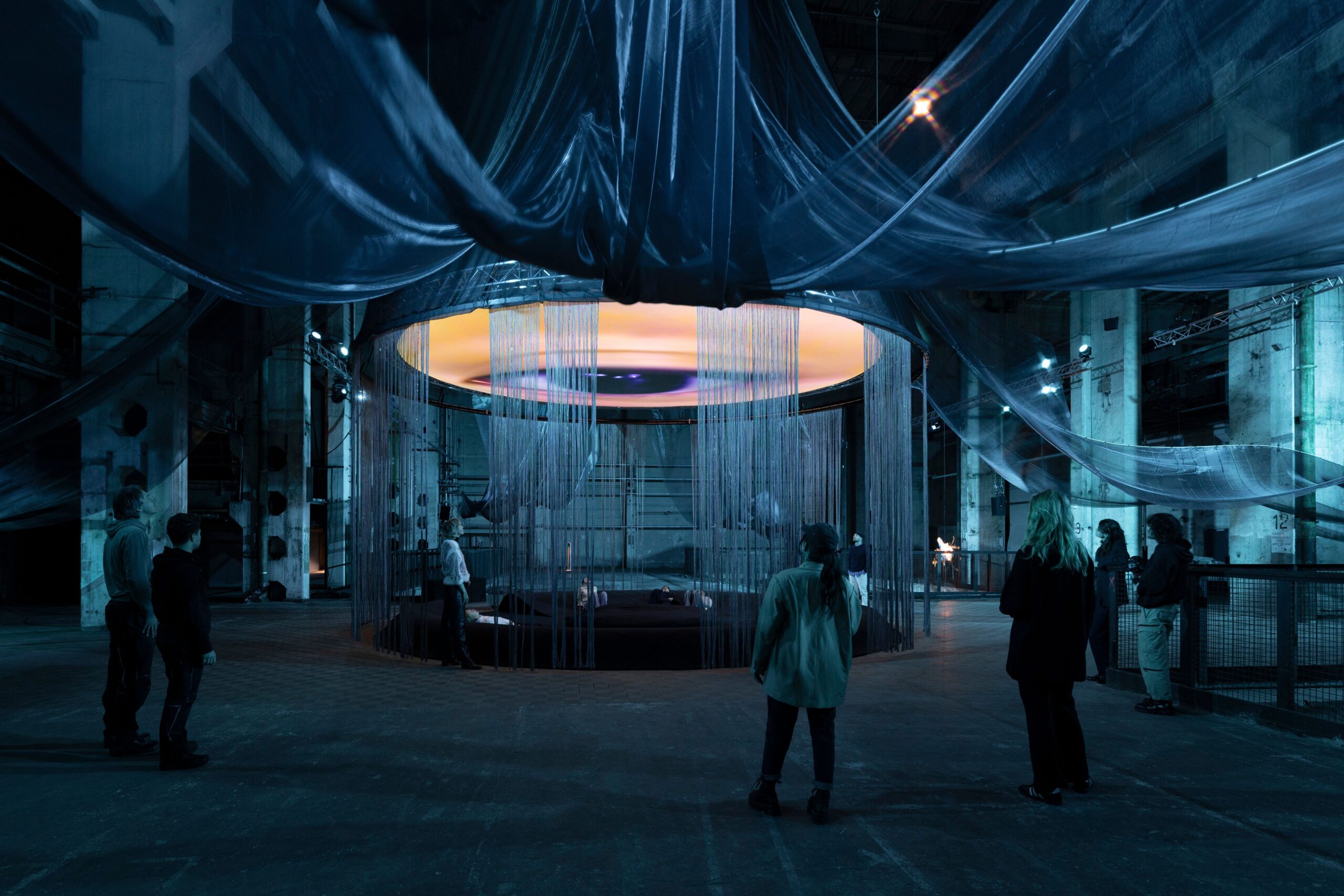At the Ars Electronica Festival 2025, artistic works will question the power of global tech corporations, shed light on “surveillance capitalism,” and show how we can reclaim our role in an AI-driven world.
Digital technologies permeate all areas of our lives – and with them our dependence on those who shape and control them. Those who control digital infrastructures, data flows, and AI systems hold power. That is why the question of digital sovereignty is so important today: Who decides what our digital future will look like – and under what conditions?
At its core, digital sovereignty means the ability to shape technological developments in a self-determined and public-interest-oriented manner. While the US relies on market-driven self-regulation and China on state-controlled regulation, Europe is pursuing a third way: regulation based on fundamental rights, transparency, and democratic control.
This difference is particularly clear in the handling of data and artificial intelligence. With the AI Act, the Digital Services Act (DSA), and the Digital Markets Act (DMA), the EU is attempting to establish rules that not only limit risks but also enable alternatives to data-driven platform capitalism. But laws alone are not enough.
US and Chinese tech companies continue to dominate markets and infrastructure: they control over 90% of AI data centers. Computing power is thus becoming a geopolitical resource – with strategic importance similar to that once held by oil.
The European single market, with its 450 million users, is a powerful political instrument. But true independence requires more: its own infrastructure, digital education, an innovation-friendly start-up scene, and technological design expertise. The EU’s “Digital Compass” sets out these goals for 2030. If this fails, Europe will remain dependent and continue to leave the shaping of its digital reality to corporations that are primarily committed to the growth pressures of the capital market.
As part of the Ars Electronica Festival 2025, numerous artistic works will explore these dynamics and take up the concept of “surveillance capitalism” developed by Shoshana Zuboff—an economic system in which personal data is systematically collected, evaluated, and used to predict and specifically influence our behavior. The works ask what role we humans are still destined to play in a future shaped by AI and corporate interests—and how we can reclaim it.
Art between threat and renewal
In 2025, panic is no longer a sudden moment; it has become the underlying mood that pervades our everyday lives. From algorithmic warfare to unleashed AI, from global surveillance structures to climate tipping points: a creeping fear shapes our collective imagination. But what if panic is not just a symptom of collapse, but a prerequisite for renewal?
“Archipelago of Possible Futures” is a one-day forum that traces the path from panic to possibility. This year’s S+T+ARTS Day* is organized in collaboration with E-DIH AI5Production* and curated by Francesca Bria and José Luis de Vicente. A journey through the infrastructures of our present, through the cracks in their foundations, and to the visionary designs of what might come next. The forum is divided into three movements: Reckoning, Rebuilding, and Reimagining. We confront the reality of authoritarian infrastructures, develop democratic alternatives for Europe, and dare to look into possible futures for technology and society.
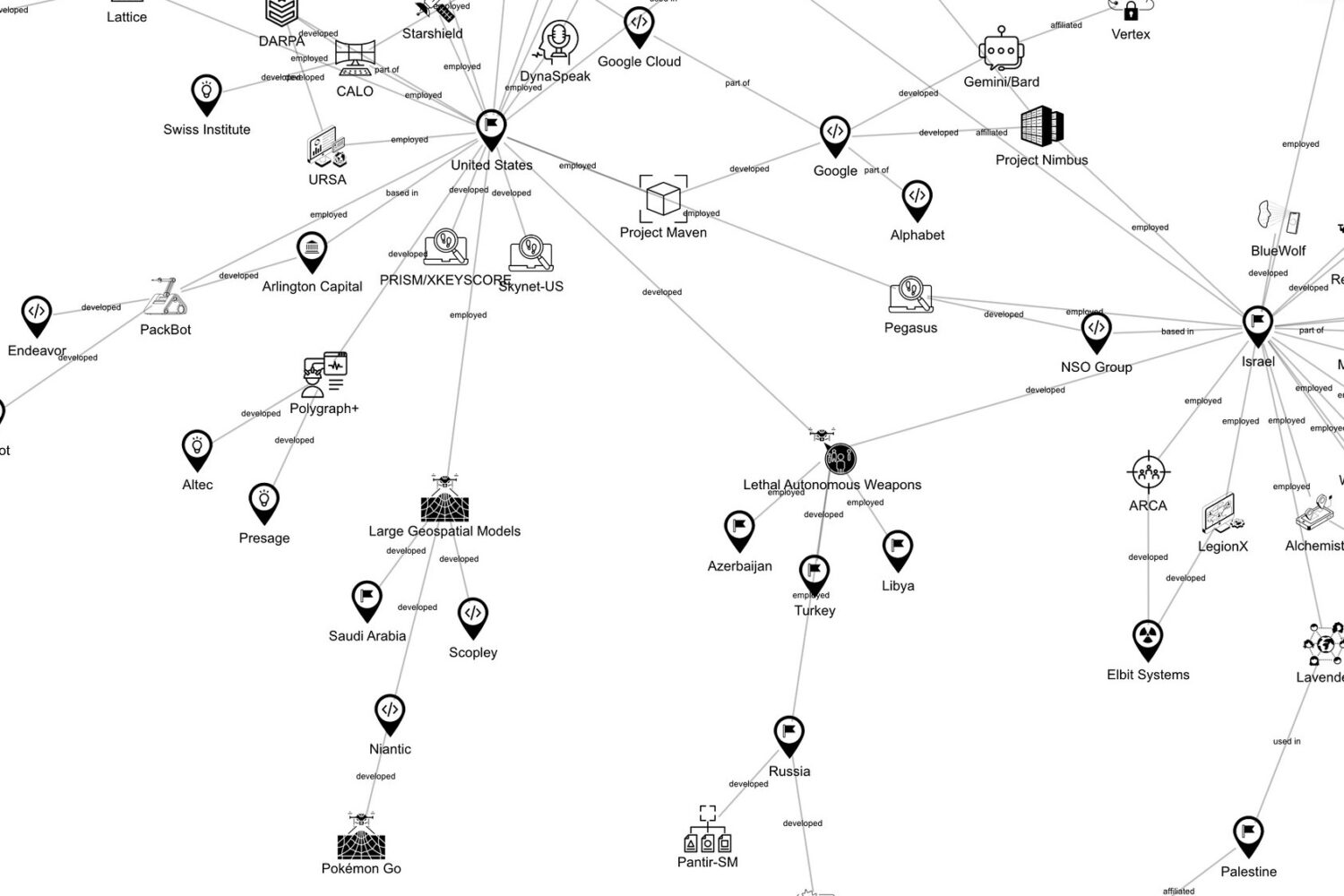
The forum is inspired by two projects that are also part of the STARTS Prize Exhibition 2025: AI War Cloud Database by Sarah Ciston and Sensing Quantum by the LAS Art Foundation. The STARTS Prize Exhibition, presented in the framework of the STARTS Afropean Intelligence and STARTS Ec(h)o projects*, showcases outstanding examples at the intersection of art, technology, and science—projects that are not only aesthetically pleasing but also socially and politically relevant.
We use artificial intelligence every day, in our smartphones, in online searches, on social media. But we rarely think about how the same technologies are used in completely different, far more threatening contexts. AI War Cloud Database, winner of the STARTS Prize 2025 Grand Prize – Artistic Exploration, highlights precisely these overlaps: it shows how technologies developed for convenience and efficiency are simultaneously used for military purposes – for example, to automate decisions in war. The project asks an uncomfortable question: What does it mean when tools that make our everyday lives easier are also used to kill?
The project maps AI systems in military use and traces their connections to commercial technologies such as iris scanners, chatbots, and digital map services—as well as to the companies and governments behind them. Users can explore and deepen their understanding of these connections through interactive stories and visual networks. The AI War Cloud Database reminds us that how we design, manage, and use AI systems has consequences. Neutrality is no longer an option.
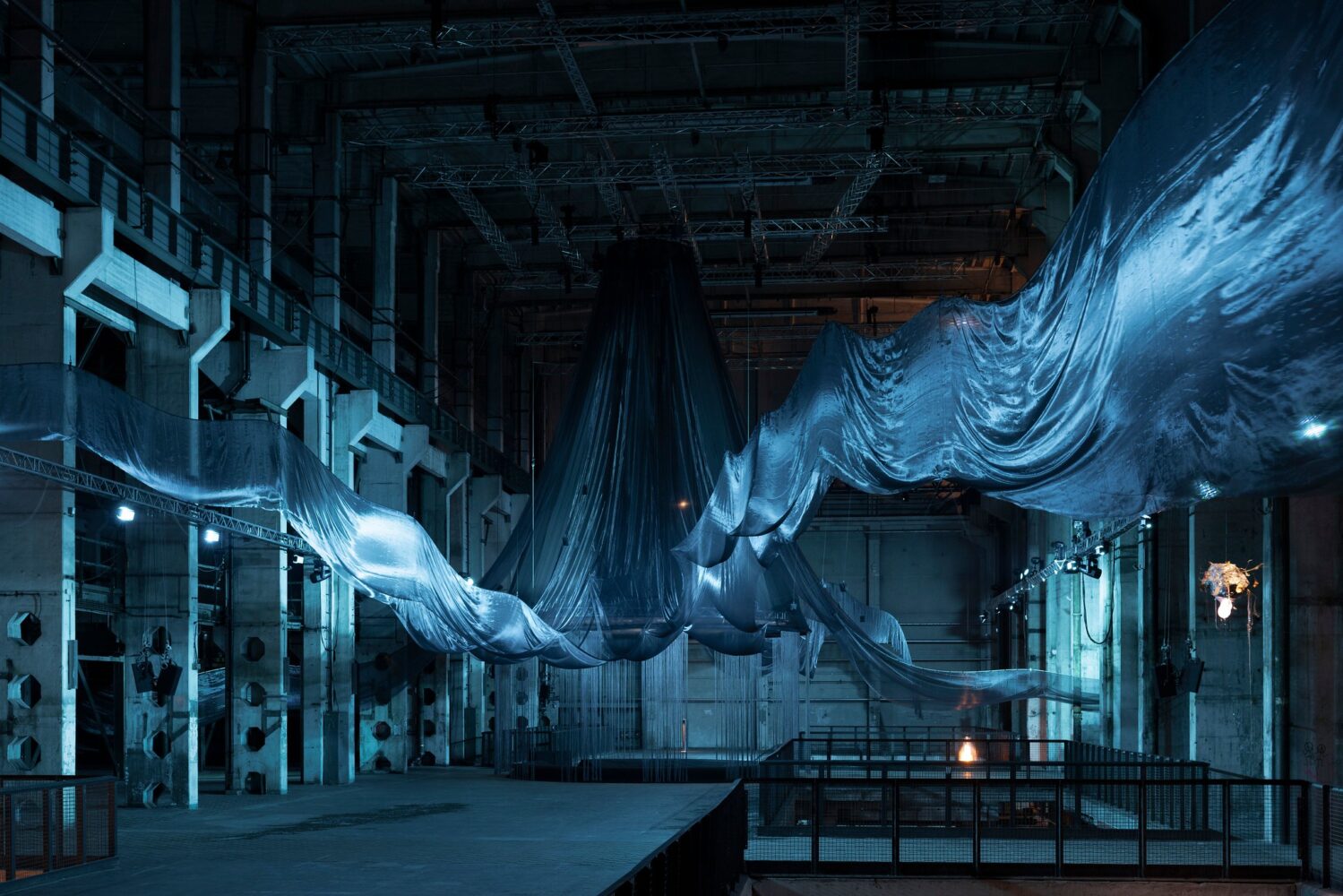
Sensing Quantum, winner of the STARTS Prize 2025 Grand Prize – Innovative Collaboration, also looks behind the surface of technological development – this time in the field of quantum physics. A century after its inception, this discipline is beginning to go beyond theory and help shape the reality of our lives. However, public understanding often remains abstract and difficult to access. This is where Sensing Quantum comes in: the project promotes interdisciplinary collaboration to translate complex principles of quantum physics into immersive, thought-provoking experiences. Artists, scientists, and thinkers come together to explore and reveal the significance of creative experiments with new technologies.
The presentation shows the first results of this long-term initiative. Among other things, visitors can see impressions of Laure Prouvost’s installation WE FELT A STAR DYING and the sound work Primary Action at a Distance by Kara-Lis Coverdale, which was composed with the help of Actias, a synthesizer based on quantum physics principles.
In addition, visitors will gain insights into how a quantum computer works and learn about key milestones in the history of this technology. “Sensing Quantum” invites visitors to experience how artistic and scientific research inspire each other—and together open up new paths.
Europe’s answer to Big Tech and dependency
What could a technological future look like that is not characterized by opacity, surveillance, and dependency, but rather by openness, purposefulness, and the common good? A future in which technologies increase our productivity, promote creativity, and enable scientific progress? These questions are the focus of numerous lectures, town hall meetings, and workshops during the festival. The EuroStack white paper will also be discussed.
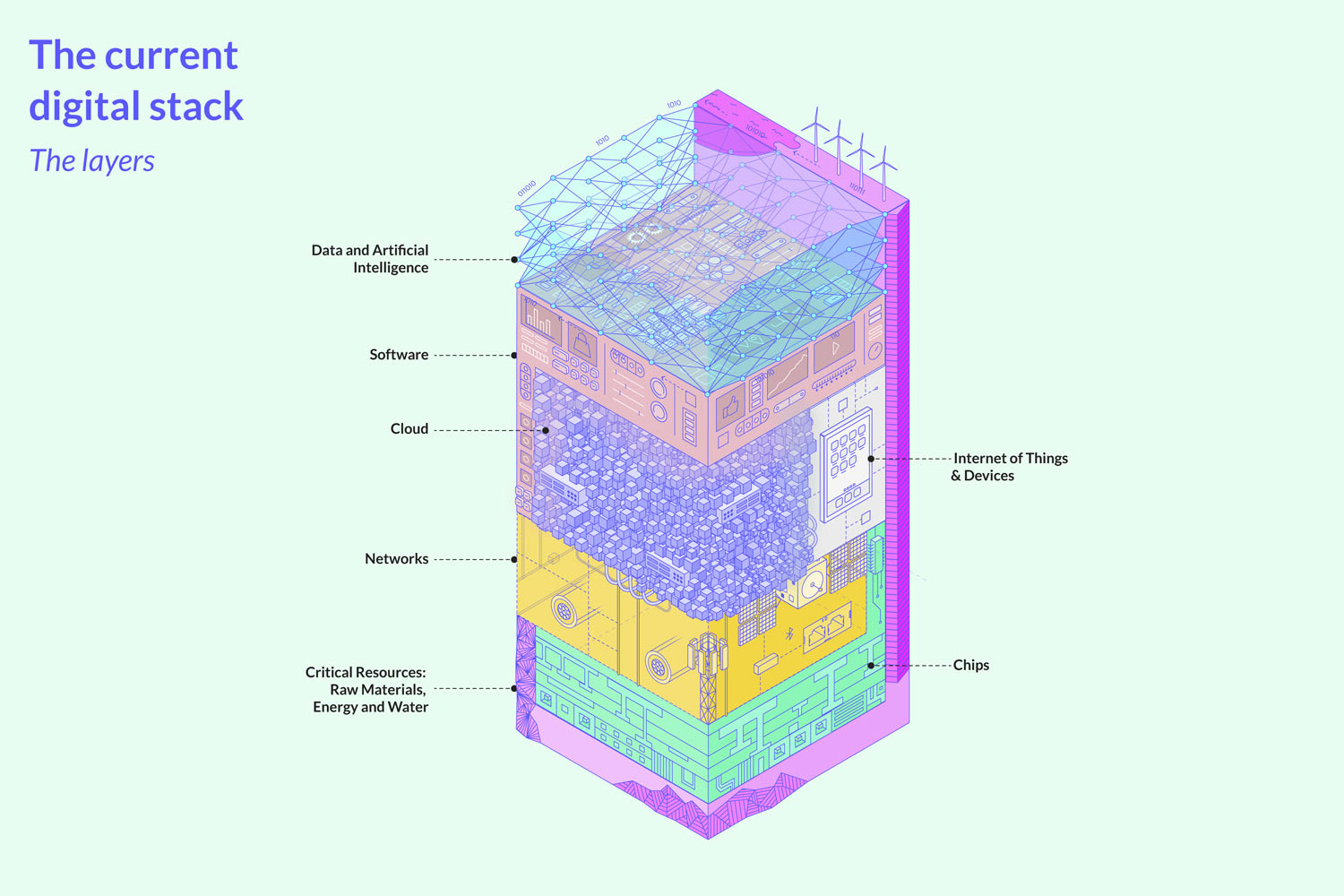
The “EuroStack” is Europe’s most ambitious proposal to rethink digital sovereignty as a response to AI superpowers, platform monopolies, and techno-military dependencies. Initiated by Francesca Bria and a network of European institutions, it understands digital infrastructure as a political, ecological, and democratic field of action. Unlike the centralized platform models of the US and China, the EuroStack is based on an open, federated, and public-interest-oriented architecture. Each layer—from raw materials, chips, and data centers to AI, data spaces, and governance—is considered a zone for social negotiation.
At the festival, a curated information architecture brings seven levels of digital infrastructure to life and highlights areas of tension, potential, and scenarios, from green semiconductors to democratic AI and sovereign cloud computing. Drawing on Europe’s history of cooperative institutions, the question arises: How can technology strengthen democracy, diversity, and planetary responsibility?
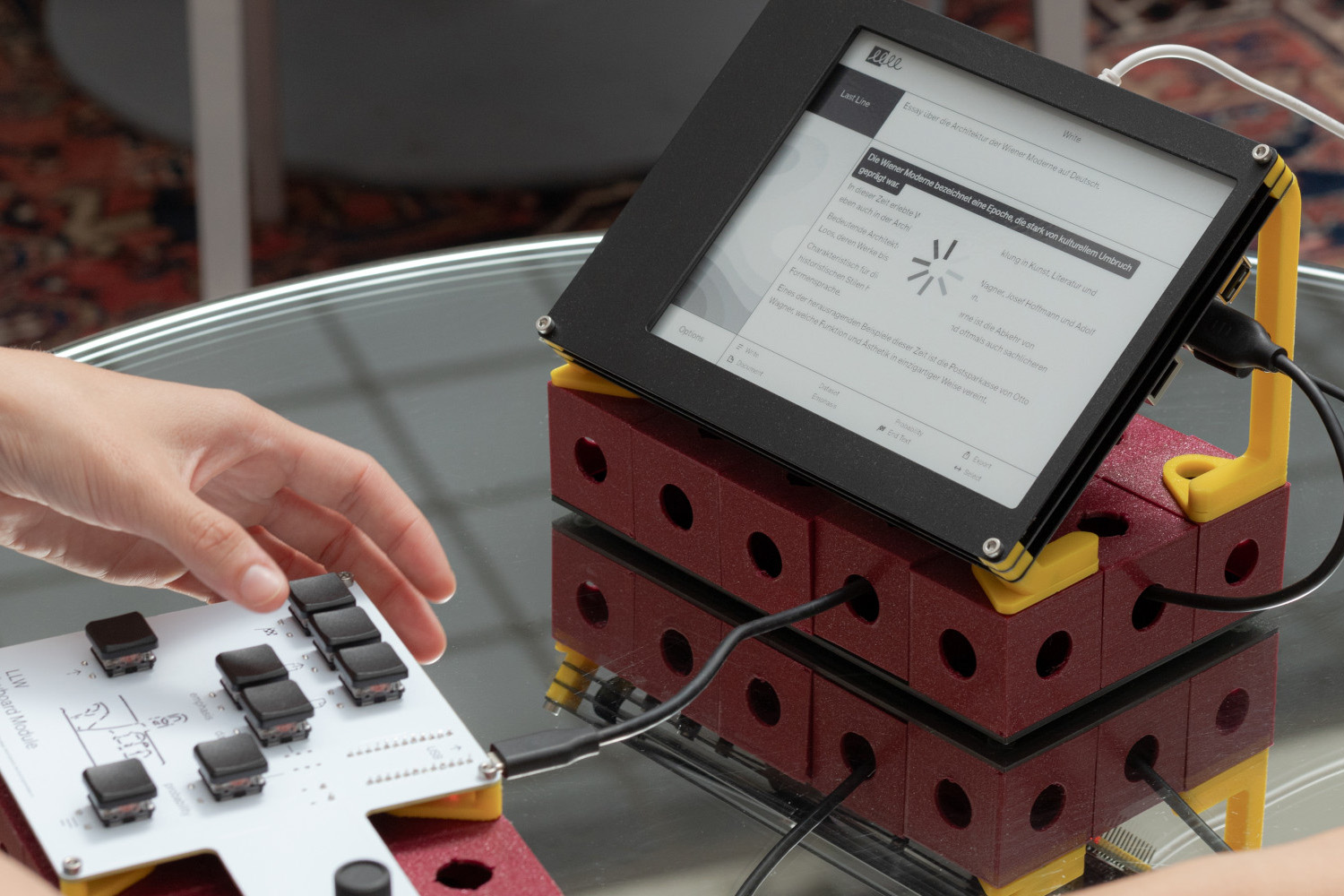
Technological sovereignty is also the focus of the “Large Language Writer” project by Leo Mühlfeld, Lucy Li, and Alan Schiegl. Because as fast as digital technologies develop, it is often difficult to understand how they work. Many of us use AI systems every day, for example for texts, images, or translations, without understanding what is actually happening in the background.
This is exactly where Large Language Writer comes in: the project makes the process of AI text generation visible and comprehensible. Instead of simulating a smooth, seemingly magical user experience, it invites users to take a look behind the scenes and try it out for themselves. The system is based on three central elements: data set, emphasis, and probability. They illustrate how language models such as GPT generate their texts. A specially developed machine allows this process to be physically explored and researched.
Large Language Writer makes it clear that it is not enough to simply use AI—we must understand it. Only then can we have a say in which technologies we want to design, use, or consciously reject in the future.
Experiments in the Open Futurelab
In the Open Futurelab of the Ars Electronica Futurelab, festival visitors will encounter two projects that show in very different ways how artificial intelligence influences our perception, communication, and interaction.
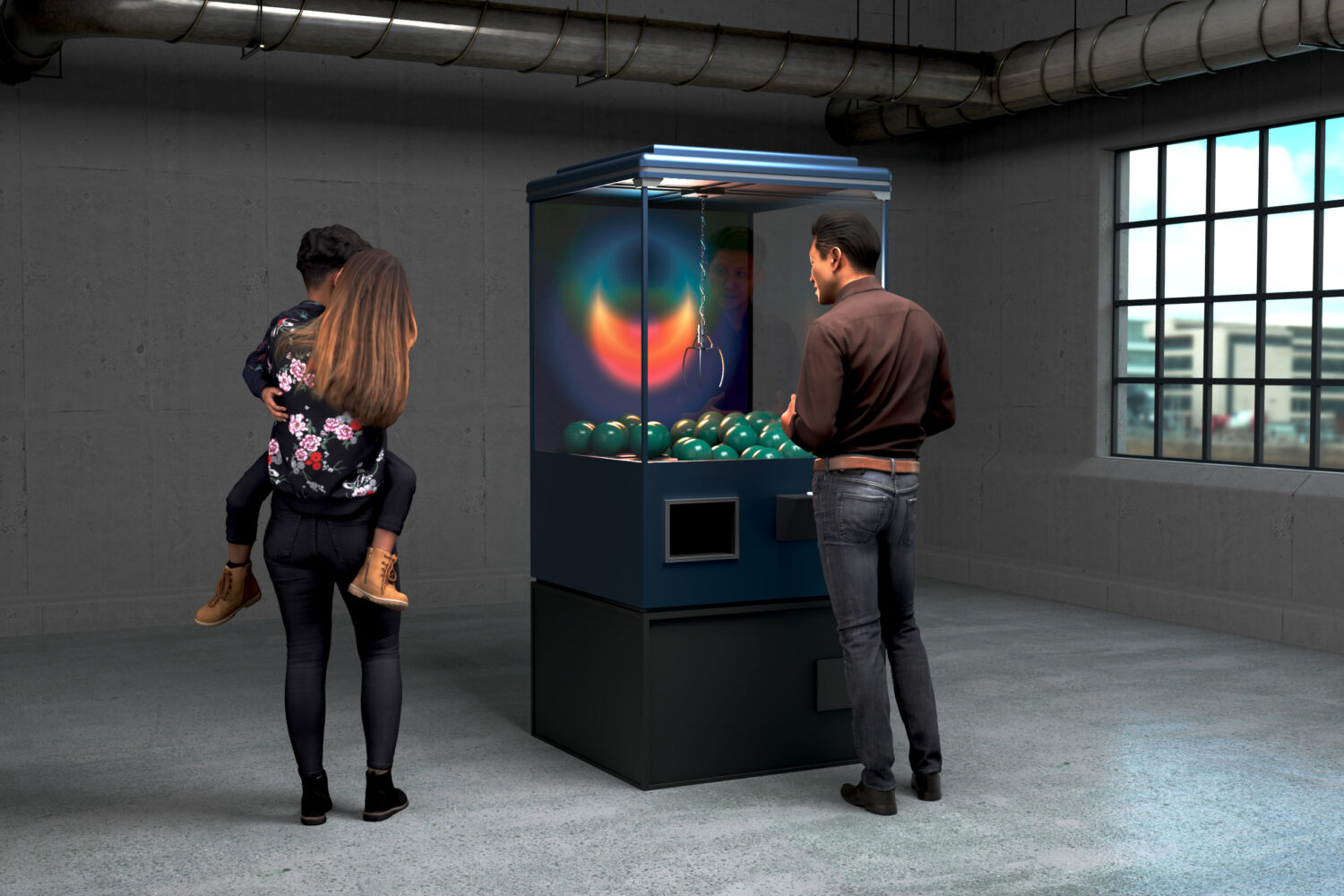
With “Alter.Ego,” audiences can expect an unusual interactive partner: a claw machine that is operated not with coins, but with persuasion. The goal is to enter into dialogue with the machine and convince its changing personalities to release a gift. Together with Godot, the Ars Electronica Futurelab is exploring AI systems with a certain degree of autonomy in this project. The question is how different AI personality profiles influence our emotions, our behavior, and ultimately the interaction between humans and machines.
At the touch of a button, the character of the machine can be changed, including its communication style, movement patterns, visual effects, and sounds. The claw machine thus becomes an interactive field of experimentation for empathy, strategy, and humor in dealing with artificial personalities.
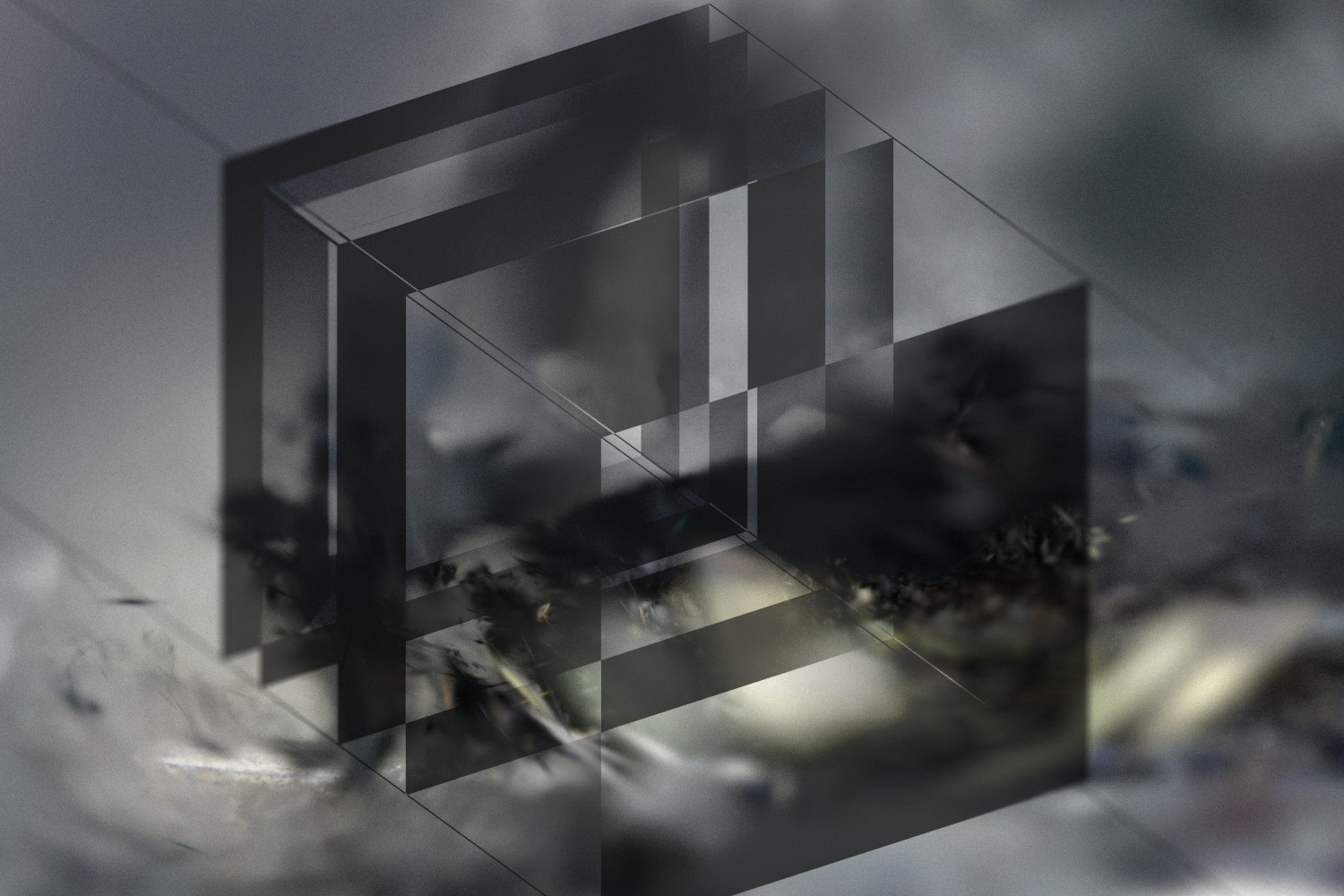
Inference Ground Truth, an artistic experiment with overlapping realities, takes a different approach. The installation by Johannes Pöll, Raphael Schaumburg-Lippe, and Simon Schmid uses current Gaussian splatting techniques to record and visualize volumetric movement traces in real time. The central question is: What does “ground truth” mean in the tension between human experience and machine interpretation?
Visitors enter the recording space themselves and become part of the artwork: their movements directly influence the visual processes, visible on a screen that shows the transformation of the data into complex 4D Gaussian splats.
“Inference Ground Truth” is one of the winning projects of Ars Electronica Futurelab’s internal competition Ideas Expedition 2025 and continues the exploration of new imaging techniques that began in 2024 with the project Persistent Time Sink Resonance.
Both projects show that when we communicate with machines or are read by them, it is not just about technology, but also about perception, interpretation, and the negotiation of relationships. And perhaps this is precisely where the key to a new quality of human-machine cooperation lies.
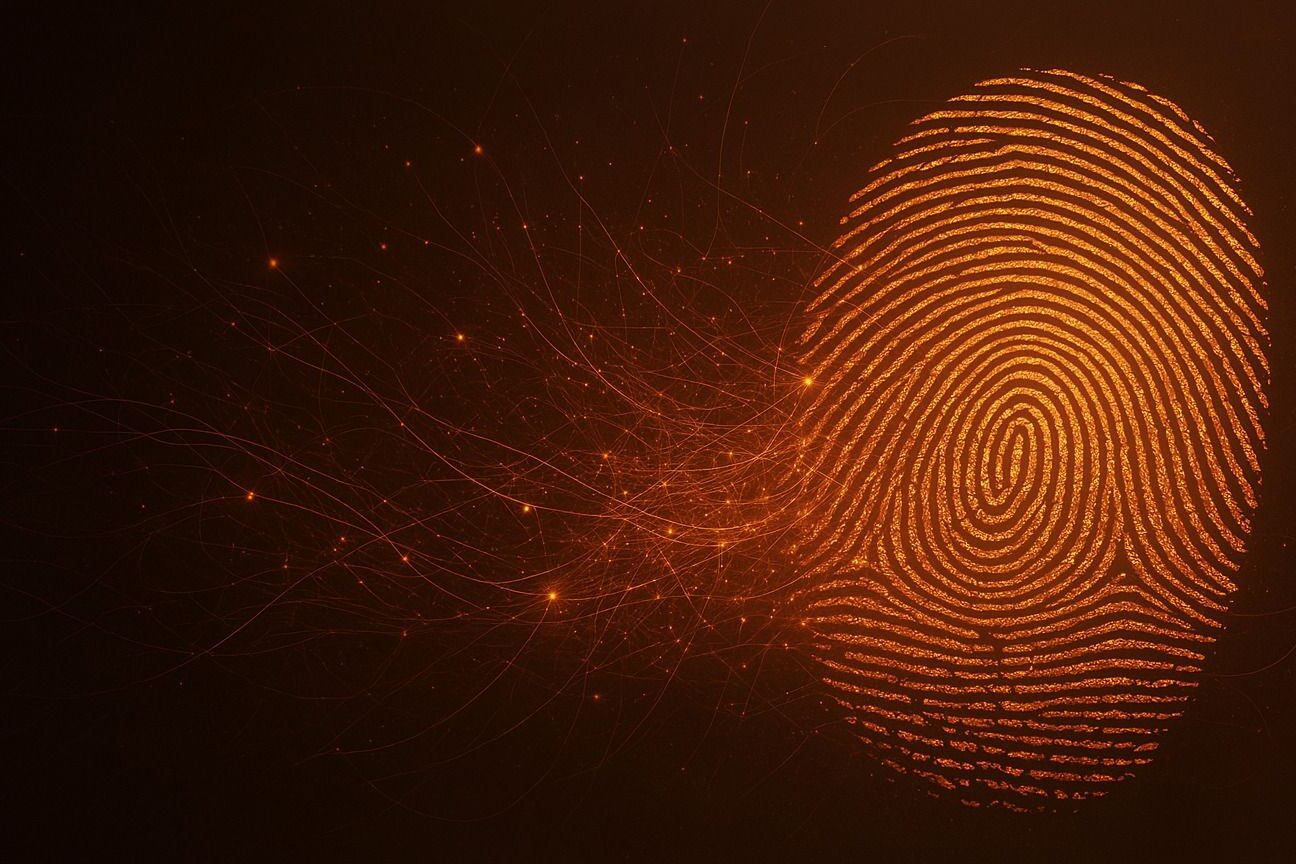
Digital shadows and AI wonderlands
How can a camera be fooled? How visible do you want to be? And who owns the digital traces you leave behind? “Digital Shadows,” a project by the Institute for Networks and Security and the Circus of Knowledge at JKU Linz, invites you to explore these questions. In immersive, performative zones interspersed with choreographic elements, the audience encounters itself: mirrored, copied, measured—and at the same time lost in a system that knows more than it should reveal. Between play and analysis, concealment and disclosure, a dense reflection emerges on identity, control, and visibility in the age of facial recognition, deepfakes, and algorithmic profiling.
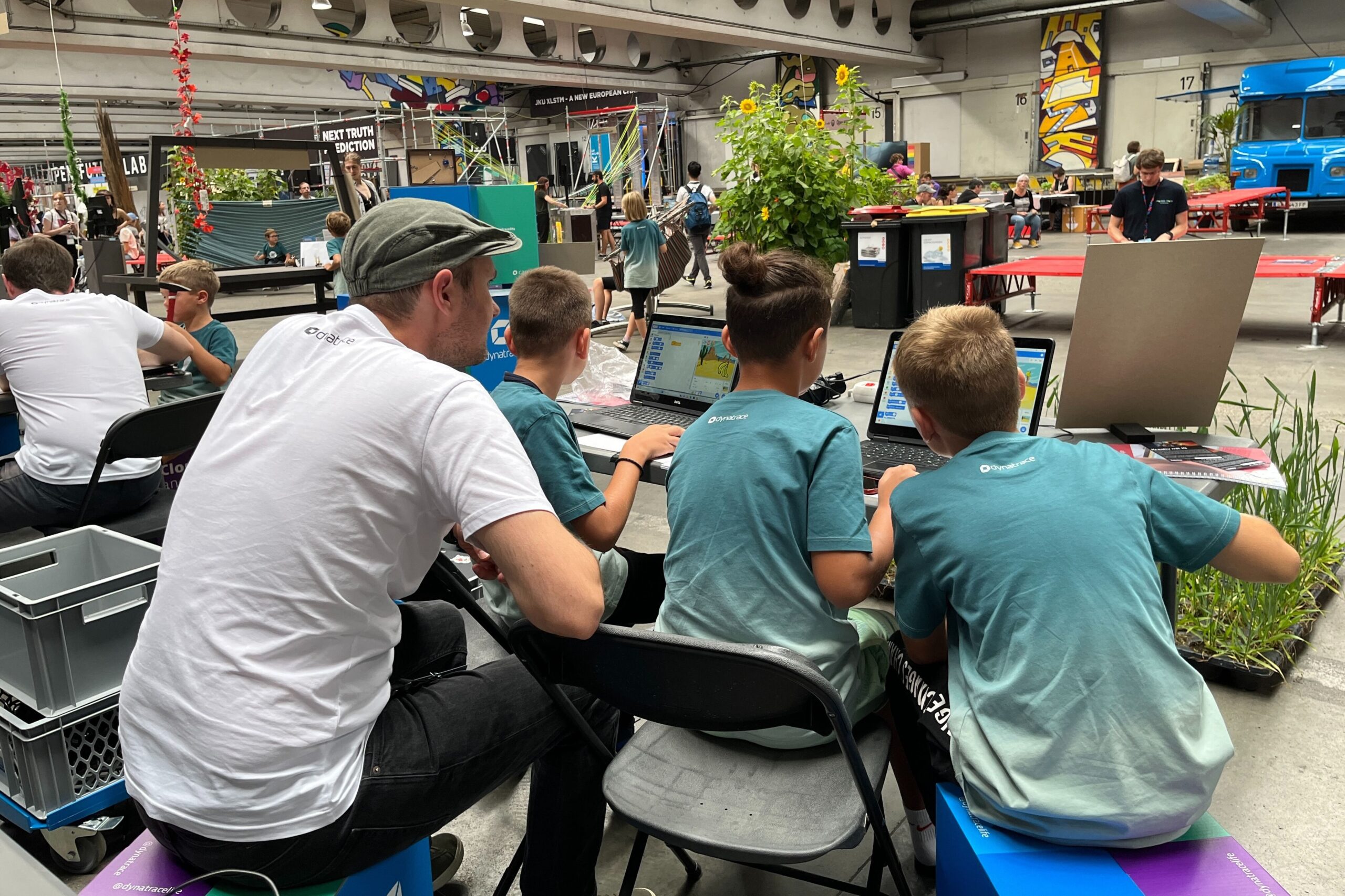
The “AI Wonder World” from Dynatrace and CoderDojo Linz opens up completely new avenues: here, artificial intelligence can be experienced in a playful way for the whole family. An AI agent guides visitors through all the stations and helps them to creatively discover the potential of modern technology. Whether programming Bee Bots, designing your own game, learning to solder, or trying out AI systems—participation is expressly encouraged in the “AI Wonder World.” It’s a program full of “aha” moments that inspires enthusiasm for technology, awakens curiosity, and offers uncomplicated access to digital topics of the future.
The Ars Electronica Festival will take place from September 3 to 7, 2025, in Linz under the theme “PANIC – yes/no.” For more information about the festival, visit our website. An overview of other highlights of the program can be found here.
* Presented in the context of STARTS Afropean Intelligence. STARTS Afropean Intelligence is funded by the European Union under the STARTS – Science. Technology and Arts initiative of DG CNECT under Grant Agreement No. LC-03568051., Presented in the context of STARTS Ec(h)o. STARTS Ec(h)o is funded by the European Union under Grant Agreement No. 101135691.
